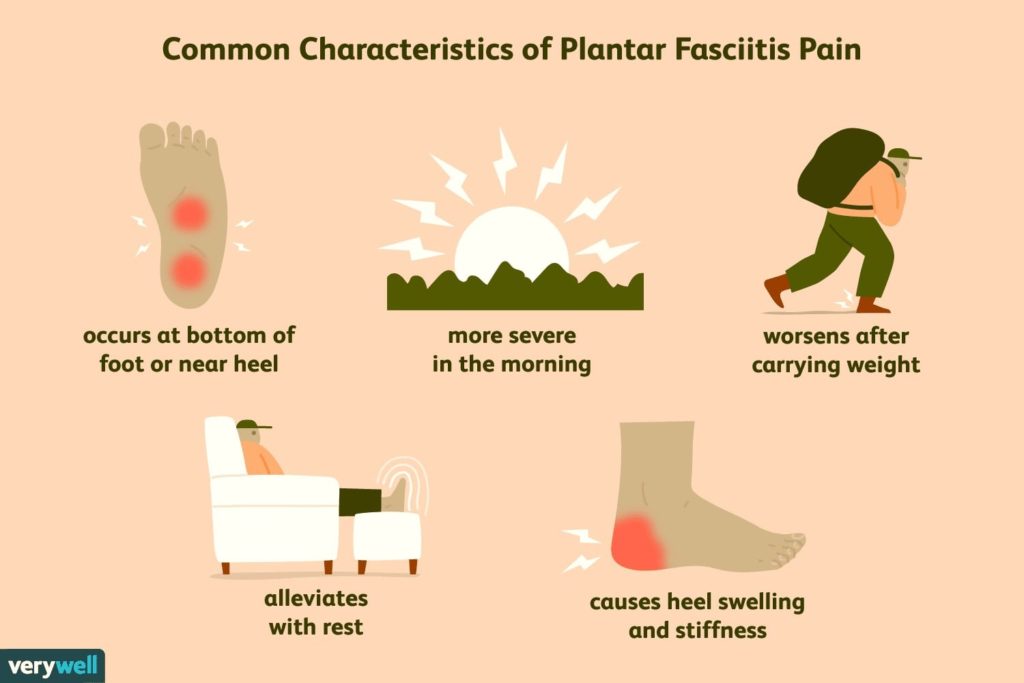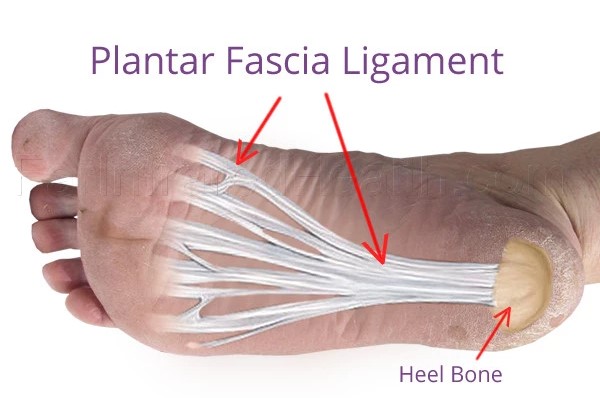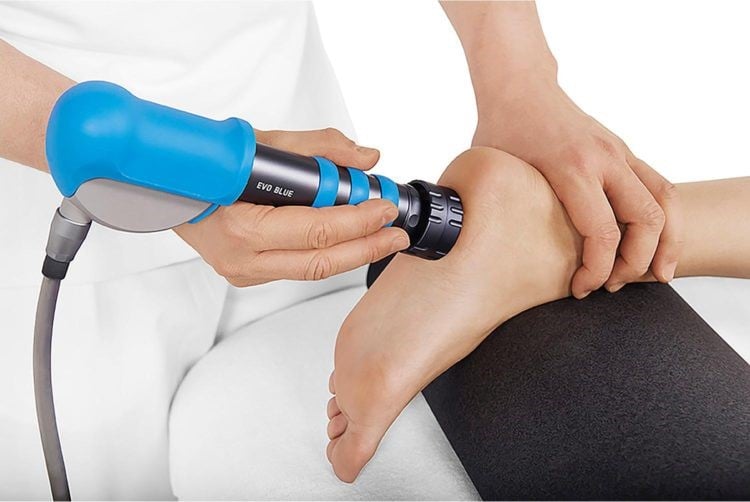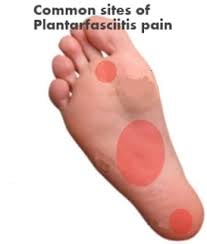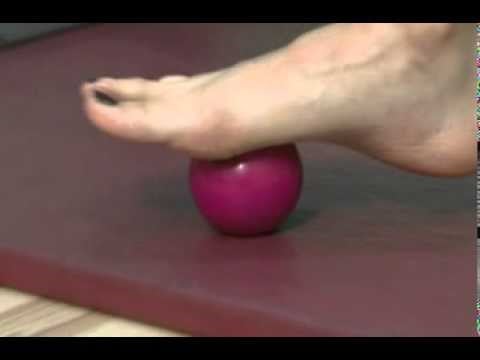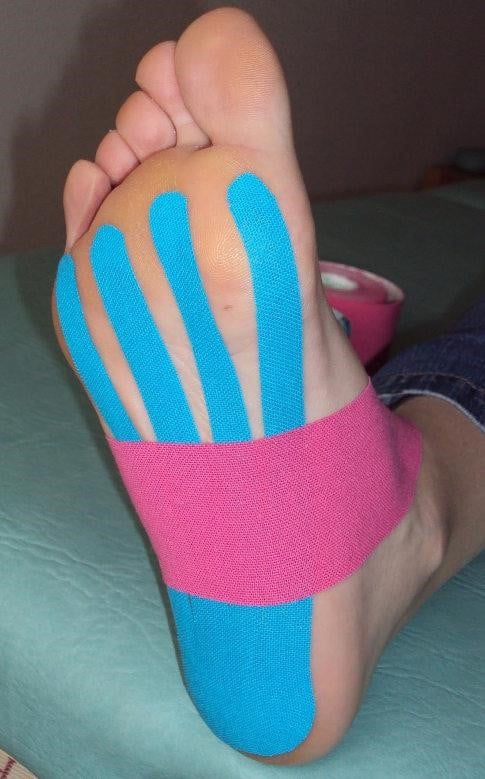Plantar Fasciitis
Plantar fasciitis is one of the most common, known heel pain. Your plantar fascia is a thick fibrous band of connective tissue originating on the bottom surface of the calcaneus (heel bone) and extending along the sole of the foot towards the toes.
When your plantar fascia develops micro tears or becomes inflamed it is known as plantar fasciitis.
Risk factors –
• Overweight or a recent weight gain. More weight equals more force through our arches.
• A recent change in amount of time spent standing/walking.
• Weak intrinsic muscles of the foot. The intrinsic foot muscles help to support our arch and plantar fascia.
• Heel striking during walking/running. Heel striking increases the stretch pressure on the calcaneal insertion of the plantar fascia.
• Tight calves – In younger people the fibres of the plantar fascia link up with those of the Achilles tendon, this connection lessens with age. Therefore, tight calves can influence the pull on the plantar fascia.
• Sports that place excessive stress on the heel bone and attached tissue, especially if you have tight calf muscles or a stiff ankle from a previous ankle sprain, which limits ankle movement e.g. Running, ballet dancing and aerobics.
• Pregnant – The weight gain and swelling associated with pregnancy can cause ligaments to become more relaxed, which can lead to mechanical problems and inflammation.
• On your feet – Having a job that requires a lot of walking or standing on hard surfaces i.e. factory workers, teachers and waitresses.
• Flat Feet or High Foot Arches – Changes in the arch of your foot changes the shock absorption ability and can stretch and strain the plantar fascia.
• Ageing – With ageing the arch of your foot may begin to sag – putting extra stress on the plantar fascia.
• Wearing shoes with poor support.
• Arthritis – Some types of arthritis can cause inflammation in the tendons in the bottom of your foot, which may lead to plantar fasciitis.
Characteristics / Clinical Presentation –
• Sharp pain on the bottom of the foot or near the heel.
• Most pain is in the morning but eases away after walking around or a few minutes.
• Pain worsens after standing for a long time or after getting up from sitting.
• Pressing on sides of heel or arch of the foot hurts.
• Discomfort when stretching the foot.
• A limp may be present or may have a preference to toe walking.
• Pain is usually worse when barefoot on hard surfaces and with stair climbing.
Treatment –
There are essentially 8 stages that need to be covered to effectively rehabilitate plantar fasciitis and prevent recurrence. These are:
1. Early Injury Protection: Pain Relief Modalities like Ice/hot packs, Ultrasound, IFT, Shockwave therapy, Kneading, Kinesiology Taping, Do’s & Don’ts
2. Regain Full Range of Motion: Focusing on Soft tissue & Joint mobilisation & manipulation techniques, Stretching techniques
3. Restore Foot Arch Muscle Control: We provide you with foot stabilisation exercises as they are an excellent long-term solution to prevent and control plantar fasciitis
4. Restore Normal Calf & Leg Muscle Control: All of your leg (calf, thigh and hip) muscles play an important role in controlling your foot arch and its normal function. We will assess your leg muscle function and provide you with the necessary treatment or exercises as required
5. Restore Normal Foot Biomechanics: We help assess & correct your foot biomechanics & restore normal movement
6. Improve Your Running and Landing Technique
7. Return to Sport or Work
8. Footwear Analysis
If left untreated, it may become a chronic condition—you may experience pain in your foot, knee, hip and back because plantar fasciitis can change the way you walk.
You may have taken traditional Physiotherapy treatment before for the same, but the latest technology of ECSW (SHOCKWAVE THERAPY) has given the best & fastest results in our practice & experience.
So, if you don’t want to drag your therapy, opt for this treatment with us now!
Tips from us –
• Reduce the amount of time weightbearing – In the first stages of recovery increasing the amount of time spent sitting compared to standing is the most effective way to relieve pain and allow the plantar fascia to heal in the short term.
• Modify the predisposing factors – Tight calves? Too much activity? Flat feet? We will help treat you accordingly.
• Strengthen up – Strengthening up the small muscles of the foot and ankle can improve the arch and take pressure off the tendons and joints of the foot. We help prescribe specific foot strengthening exercises for you to incorporate into your weekly regime.
• Get more supportive shoes –Some people may have strong enough intrinsic muscle and arch strength to wear minimalist shoes whereas some people may need a thicker softer sole. However, the number one priority is that we feel our shoes are comfortable throughout the day. If yours aren’t, change them!
• Use bio-mechanical aids to help through the pain before your plantar fascia is healing. We can help you prescribe arch inserts, kinesiotape or other alternative therapies.
• Weight loss and load management are an important influence upon the initiation and duration of plantar fasciitis. Your weight may be impacting upon your plantar fascia, so weight loss should be a priority for those patients who are carrying excess weight.
For further information, reach out to us at –
Pooja Physiotherapy & Health Care Center
Blk 77 Indus road #01-521S’160077
Call now @ 6384 5452 or whatsapp @ 8322 3371 or
Drop an email at info@phyiopooja.com.sg
